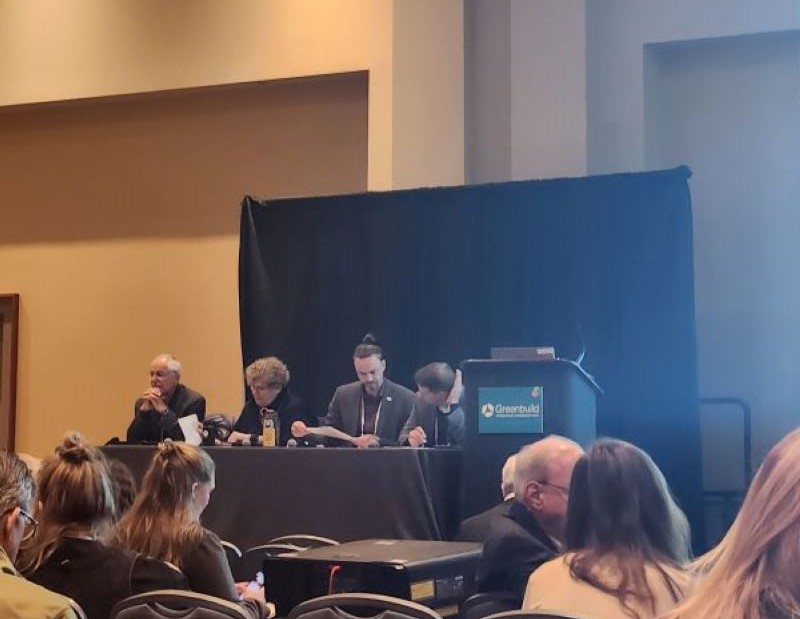Greenbuild Special Report: Raising Awareness of Embodied Carbon
When it comes to decarbonization, the responsibility doesn't fall on one group. You need buy-in from owners, contractors, designers and manufacturers.
Who holds the most responsibility when it comes to making sure a building is sustainable?
While this might start as the duty of the owner, it actually should be a team effort. At the Greenbuild conference in Philadelphia, Anthony Bernheim, healthy & resilient buildings program manager, City & County of San Francisco; Katie Poss, director, global policy & procurement, Building Transparency; Kirsten Ritchie, principal & global director, Gensler; Isaiah Walston, director of sustainability, Hitt Contracting Inc.; and Joey Shea, manager North American Sustainability, Interface, discussed how owners, contractors, designers and manufacturers all play a role in decarbonization.
When it comes to reducing a building’s carbon footprint, “it takes a team,” Bernheim said. And there should be discussions about how to make the process the most sustainable starting at the beginning, especially because the volume of new commercial real estate is always increasing.
READ ALSO: When Healthy Buildings Take Center Stage
“By 2030 a whole United States will be built again,” Walston explained. To keep up, contractors should work on labor, construction and waste practices. Additionally, they need to be aware of carbon reduction, jobsite wellness, waste reduction, water management and material selection.
And as for regulations, always aim for more than what is required. “The mindset shift is not just about compliance and checking the boxes, but dreaming bigger,” Shea said. “We can all angle more of our business and demand to reward decarbonization and success.”
Gensler, for example, has established it’s own baseline with embodied carbon limits. They are currently working with their internal design teams to make it standard across their projects. And Walston suggested using software to collaborate with building teams, so that everyone is on the same page throughout the whole process.
Reduce and reuse
New buildings often have the largest amount of embodied carbon. To really affect change, look to adaptive reuse.
“The number one thing I want to remind everyone is making use of what you already have,” Ritchie said. “Have your eye out on how we can take better use of what we already have.”
The most important aspect of decarbonization might be making sure your teams communicate throughout the process. That, and to not become complacent.
“I don’t let anyone call us sustainable, because ultimately ‘sustainable’ is a binary,” Shea said. “We have a long way to go as an industry. This represents a shift from meeting a demand that exists to building a strategy for the long term.”








You must be logged in to post a comment.